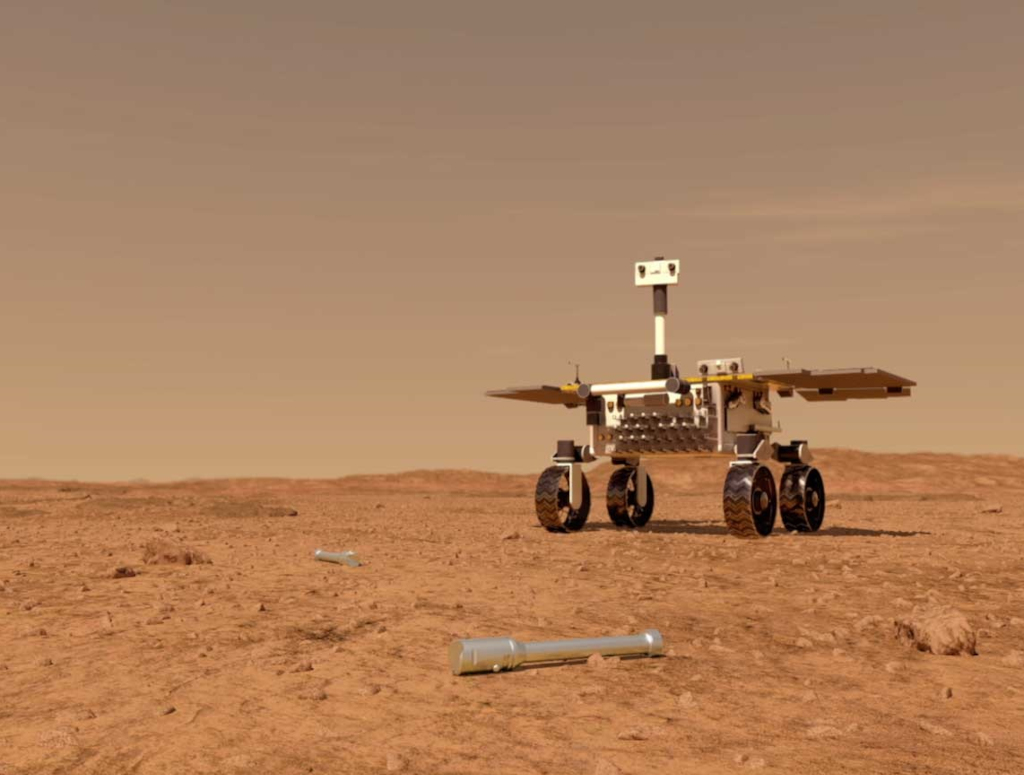
There is a natural human psychology for consolidation over exploration. Inherently we can feel that successes are something to be protected, perhaps to build on, but never to take risks with. This is a easy mindset to develop, but why is it dangerous? At first glance, there are many positive aspects, especially for close-horizon time scales. But across longer periods of time, the negatives significantly outweigh those positives. We find ourselves favouring entrenchment over mobility, and change and innovation become suppressed. So how can we optimise what we have, explore new possibilities, and stay future-focused?
Developing a defensive mindset
Why do we drift into stasis?
A product that started out as a bright new idea, develops over time through prototyping and user feedback, and is finally launched into the real-world is a highly collaborative effort in any organisation. We will have invested not only time in its development, but also a strong emotional attachment [1]. Often it is these bonds that give us the drive to make our products and services the best they can be. However, wrapped inside these positive aspects lie seeds of risk that can impact right across an organisations’ development ethos. When we don’t understand these dangers, it can set us on a path to gradual creative deterioration.
Often the reasons people love one product over another can be difficult to quantify. To improve our understanding of existing products, we iterate and experiment. This in turn generates data on possbile feature improvements, measuring peoples happiness with our changes. This gives us a relatively easy pathway to develop an understanding of what our customers will and will not like. The impact of a new product however is much more of an unknown. User research can reduce the uncertainty, as can getting prototypes into the hands of users early. Despite this, outcomes will always feel more uncertain, triggering emotional responses that push us towards taking safer paths [2].
Outside of the fear of uncertainty, people tend to gravitate towards high momentum products. We dedicate more of our time and resources to those that are high profile and already well-loved by our users. Even as we focus resources on these perceived high-value products, those resources are not necessarily as productive as we might hope. With existing products, we might improve and develop them, but we don’t want to break the winning streak, disrupt our users enjoyment of our new service, or distract attention away from it. This again triggers our cautious responses, slowing down change [3].
Our human reactions to uncertainty and emotional embedding in successes, focuses us on our successful products, the ones our customers love, the ones that are the core of our business revenue, often at the expense of new innovations. But, is this a problem? Why not invest our time in known successes rather than risking failure?
Breaking good
The stagnation of over-protection
While landing the perfect product or service first time might be the goal, in practice this is usually the optimisitic dream and not the expected reality. Nevertheless, while we look to get as close as possible to first-time perfection, we certainly want to move ever closer to a great product as we iterate and develop. Whether waterfall, Agile, or another development philosophy, the process of refining, tweaking, and adapting to meet users’ ever-evolving needs is core to the business of modern software development.
Workflows like those mentioned can be highly productive, however, no matter the approach taken, there is always a risk to becoming over-committed to, and over-dependant on, generating constant product refinements. There is no perfect platonic form that we gradually move our real-world products and services towards, no point we will reach where our users will have the perfect experience. As such, we can find ourselves working in ever decreasing circles, with change and rewards for effort becoming ever smaller. In reality, our users’ expectations are constantly in flux. Development needs to move in disjointed steps, sometimes taking radical new directions, sometimes rewinding previous ones.
Given that products must be dynamic and ever-changing by necessity, there is still a tendency to view the development process as an iterative one, with things becoming somehow ever better, rather than highly transformative one, where change may be revolutionary. Taking a highly successful product and replacing it by a new and substantively different one is uncommon in many organisations. Such radical change carries an over-arching fear that customers will prefer the old version and our business will suffer if we make large leaps[4][5].
This inherent fear of failure, technical and personal, and aversion to risk, drives a safety-first mentality that consolidates itself with time. The more we play safe, the more difficult it becomes to take risks in the future.
The downward spiral
Change resistance and gradual decline
Developing and improving a product will make sure that its useful lifespan is increased. But, no matter how good a product is, it is all but certain that sooner or later, another will come along and make it obsolete. While learning, adapting, and improving, are crucial elements to ensuring people still enjoy using our products for as long as possible, its important that we maintain the concept of their ephemerality in the back of our minds.
There is an inevitability to losing the competitive edge in a market offering. This is especially true if we back away from radical innovation, and products change too slowly for any length of time. A lack of greenfield thinking leaves competitors and new entrants to close any feature gaps with our own. We lose our differentiators and become less distinguishable to our customers.
By holding on too tightly to what we have, we miss the opportunity to explore ways to revolutionise the way things are currently done. For success to last beyond the short-term we need to free ourselves up to visualise new ways of doing things, ideas that may well make our current ones redundant. Its these new approaches that can rapidly grow from nothing to exponential adoption.
Embracing change
Exploring unknown spaces
Being drawn towards known situations and being unnerved by the unknown is a deep human construct. A tendency towards less risky actions and change. This is magnified inside of social organisations, which businesses are naturally a form of, due to the effects of norms and fear of failure within groups. Given our natural instincts, how do we overcome them and balance exploration with consolidation, risk taking innovation with iterative improvement?
Embracing experimentation means that every step forward is positive
Failure is something we feel a deep-seated need to avoid. All too often, it is something that gets attached to groups and individuals who try to make changes, build new things, and head in new directions. It is this instinct that drives our individualistic responses and pushes us into over-cautious actions. In a group setting, the additional pressure of social norms adds elements of social toxicity that reinforces this behaviour.
By shifting attitudes from current solutions being permanent, and appreciating the inevitability in their decline, it becomes much simpler to make the paradigm shift towards experimentation as a core part of the natural evolution of development. The more experiments we make, the more failures we get, and the closer we’ll be to uncovering new directions and successes. Without failures we cannot have explored much of the solution space to our problem to find the best ways forward. In truth, failures, and large numbers of them, are crucial to searching this innovation space. With this ethos, peoples’ worries around making mistakes, the stigma of errors, and overly cautious behaviours arising out of group norms, can be greatly reduced. Being able to depersonalise failures and begin to view them as positive outcomes of exploration is key to encouraging creativity[6][7][8].
Plot your own downfall, be your own competition
One of the best ways a business can avoid being overtaken by a competitor is to become that competitor internally[9]. But how many feel comfortable creating a product inside their own business that competes with one of their own, most successful existing ones? We should always bear in mind that even if we’re not looking to make our own products redundant, we can be assured that others outside of the business are. Being your own strongest competition is the best way of bringing long-term success for the organisation as a whole.
Looking to the horizon
Remembering to be our own competition, and treating each failed experiment as a step forward, ensures we discover our best pathways forward, with a clear view of the horizon. Taking on these philosophies moves us a long way towards embracing change. Through balancing constant evolution with disruptive innovative changes, we can be at ease with radical shifts in the business landscape, developing a long-term healthy business no matter the fluctuating, highly dynamic world we operate in.
References
[1] “The IKEA effect: When labor leads to love” - Norton, Michael I., Daniel Mochon, and Dan Ariely. Journal of Consumer Psychology 22, 453-460, 2012
[2] “How to overcome your fear of failure” - Peppercorn, Susan, Harvard Business Review
[3] “Overcoming a bias against risk” - Tim Koller, Dan Lovallo, and Zane Williams, McKinsey and Company
[4] “Risky business: the neuroeconomics of decision making under uncertainty” - Platt, M., Huettel, S., Nat Neurosci 11, 398–403, 2008
[5] “What is Loss Aversion?”, Schmidt, U., Zank, H., J Risk Uncertainty 30, 157-167, 2005
[6] “The lean startup: How today’s entrepreneurs use continuous innovation to create radically successful businesses”, Ries, Eric. . Currency, 2011.
[7] “Beyond the lean start-up: experimentation in corporate entrepreneurship and innovation”, Christian Hampel, Markus Perkmann & Nelson Phillips, Pages 1-11, 2019
[6] “Developing sustainable business experimentation capability – A case study”, Ilka Weissbrod, Nancy M.P. Bocken, Journal of Cleaner Production, Volume 142, Part 4, 2017
[9] “Strategies for Managing Internal Competition”, Birkinshaw J, California Management Review, 2001;44(1):21-38, doi:10.2307/41166109









